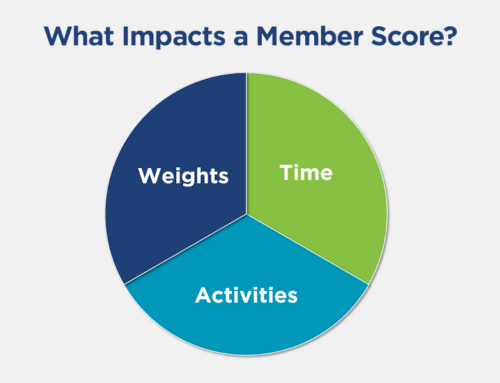When you turn to another person for relationship advice, whether that’s a trusted friend or therapist, you often start by discussing what’s bothering you. You turn to them for help because you know something is amiss, but you might not know where to start or have a frame of reference for how to come up with a solution.
But when it comes to a troubling relationship with your data, can you turn to those same people? Probably not, right? If you’re struggling to find someone to share your data woes with, we’re here to help you decipher the signs and get you back on track.
Here are the top 10 data challenges associations like yours are running into – and solutions on how to overcome them.
10: Your Data Volume and Complexity
Challenge: If you’re overwhelmed by the sheer amount of data your association collects, you’re certainly not alone. And when you’re using disparate sources to gather and analyze data, this challenge can feel even more burdensome. Sometimes this feeling can leave you wondering where or how to start organizing your data, which can easily lead to a cycle of inaction and increased overwhelm.
Solution: One way to combat this challenge is to build out a central repository using a modern ecosystem. Older models tended to be AMS-centric, leading to siloed data, static reports, and that trapped feeling. With a modern ecosystem, your association can start by separating out analytical data from transactional data. By involving a data warehouse or data lake, your association won’t be bogged down by pushing everything back to the AMS. This leads to better communication, and over time, a more organized set up so you won’t be overwhelmed by where to go for the data you need in the moment.
9: Your Data Is Not Readily Available
Challenge: You need to put a report together by the end of the week, but the person who has access to the data you need is out on vacation for the week. Sound familiar? If data is saved on a team member’s personal drive, or worse, doesn’t exist at all, your association’s data is not going to be accessible when you need it.
Solution: Solve this challenge by creating a data capture policy. Figure out what data you’re going to store, where it will be housed, and how often you’ll update what you need. Be deliberate in what you include in your collection. Be consistent in how often you collect and update the data , whether that’s monthly, quarterly, annually, etc. Be creative in how you collect your data. If you’re asking members to fill out a survey, provide an incentive for them. And of course, make it easy!
8: Your Organization Doesn’t Have KPIs and Metrics
Challenge: Without key performance indicators (KPIs) or metrics, your organization is missing out on vital information about your members. When you don’t know what’s going on with your members, what is important to them, what events they attend or products they buy or where they’re located, you’re losing out on key opportunities to connect and ultimately make your members’ experience a great one.
Solution: The solution to this challenge is pretty simple. Set up your KPI and metrics! Make sure you have a reason you’re using each KPI. Provide context you can refer back to. For example, include any details on how that KPI may impact other projects or results. Unsure where to start? Focus on what matters to operational outcomes (ex. number of webinar registrants), the customer experience (ex. satisfaction), and, of course, your association’s strategic objectives (ex. credits offered). This blog post provides additional recommendations for creating key metrics that align with your strategic objectives.
7: Your Taxonomy Isn’t Organized In a Useful Way
Challenge: Digital closets are a lot like physical closets. If your association throws everything in one place and simply shuts the door, it’s difficult to find what you need because of the chaos. You might use inconsistent content or course tagging, or team members might use a variety of names for one type of offering. Whatever the case, if your organization doesn’t keep your taxonomy tidy, you’ll spend more time querying and comparing reports than finding the data you need the first time. You can learn more about taxonomy in this blog post or watch this on-demand webinar that discusses the topic as part of an overall content strategy.
Solution: Tidy things up by creating product hierarchies and ensuring the entire team adheres to them. It can be a challenge to get everyone on board with one language when things have been done differently in the past. Provide training opportunities for employees and review your taxonomy from time to time to update any new processes. Once everyone is steering in the same direction, tagging and classifying data will become second nature.
6: Your Employees Struggle to Understand or Interpret Your Data
Challenge: If your association is sharing the same report for employees across all departments or levels, you’re likely up against this challenge. Different words can have different meanings depending on the person, and not everyone will be fluent in the same jargon or technical language. Plus, some people just don’t do well with navigating crowded spreadsheets, or might never work in spreadsheets to know what they’re doing.
Solution: The solution for this can be two-fold. Make it simple for your audience. The higher up the employee, the more likely you’ll want to use visuals to make the data easily digestible. C-Suite executives might only have a few minutes to take a look at your report – don’t waste that precious time trying to walk them through multiple tabs on a spreadsheet. For example, our analytics solution, Acumen, provides executives with a visual that consolidates all their KPIs into one dashboard. You may also consider training for all employees to become more familiar with how your association uses data. A data dictionary will help everyone across your association become familiar with the terms used when accessing, updating, and reporting data.
5: Your Data Is Not Accessible
Challenge: Ever find yourself chasing after a team member in another department to get the data you need? Or, the person you finally get in touch with isn’t willing to share the data they have? If the departments within your association are not communicating with one another about the data available, you might have an accessibility problem.
Solution: First, don’t confuse availability with accessibility. In this scenario, the data is there, it’s more likely a matter of internal culture and possibly budget. Start by looking at the various licenses and logins available to your association. Are you all out of logins but have the budget to add a few more seats? Or are there folks who never login or have left the organization? Consider reassigning their seats. Circling back to the previous challenge, it would be well worth the time and effort to train multiple employees so you’re not out of luck if someone is out sick or leaves the organization.
4: Nobody Wants to Own Data Governance
Challenge: Do you have a set of rules that nobody seems to follow? Are certain departments holding onto their data when they know sharing would benefit other groups? Or, did a brave soul volunteer to work on data governance only to find themselves restricted by those in higher positions? If you answered yes to any of these scenarios, your association likely has an issue with data governance.
Solution: Restart your data governance efforts by ensuring you include the 5 Ps: people, process, priorities, policy, and plan. Unsure where to even begin? Get a lightweight data governance template going with the WAFFLE approach. Your initial data governance template should be workable, affordable, fast, focused, light, easy, and sticky. Dive deeper into creating a lightweight data governance policy in this blog or download the Ultimate Guide to Data Governance.
3: You Lack Trust in Your Data
Challenge: This challenge stems from a variety of previously explored issues. If your association doesn’t have a solid taxonomy, your team won’t pull consistent reports. If your KPIs and metrics aren’t set up properly, what you do pull could vary tremendously over time. When two people pull the same report but see different results, trust starts to deteriorate – not only with the data but also on the team.
Solution: To get back on the track, your association needs to invest in data quality. The great news is that dirty data can be addressed over time; you don’t have to go through it all at once. When cleaning up your data, you’ll want to weed out old and incomplete data. Additionally, to resolve this trust issue, you’ll want to refer back to your data governance template and management systems. This on-demand webinar provides tips and tricks for massive data clean up, as well as maintenance throughout the year.
2: Your Data Is Stuck in Silos
Challenge: When membership, marketing, education, and/or events teams aren’t speaking and sharing insights with one another, the whole organization loses out on opportunities. This challenge goes hand in hand with accessibility, so you might find yourself facing both issues at the same time. There are all sorts of issues that can arise from lack of integration and siloed data.
Solution: If the disconnect is a result of personal, political, or organizational challenges, those should be easy to solve. While each department has its own goal, ultimately everyone should be working towards keeping members happy, engaged, and present. Member engagement is everyone’s job. To help with this collaboration, those in leadership positions should make an effort to get everyone involved; working in silos keeps employees from doing their best work and providing the best member experience possible.
1: You’re All Talk and No Action
Challenge: Does your team have meeting after meeting about what’s not working? Does your team propose solution after solution, but never makes a decision on which one to implement? Or have you finally finished a plan, only to let it sit for months on end and become irrelevant? Your organization is likely stuck in the cycle of all talk and no action.
Solution: The great news is that this challenge is solvable! Start with what tools, data, resources, and time you have now. Try small experiments to keep you and your team motivated to keep moving forward. Keep a continuous improvement mindset. A lot of these issues won’t go away tomorrow, so there’s no need to rush when baby steps can get you from point A to point B.
Don’t Overthink It – Just Get Started
Try to avoid thinking too far into the future when approaching your association’s data challenges, or you’ll run the risk of going into analysis paralysis mode and might never get started. Focus on one challenge at a time, and break the work out into different stages. As you’ve probably noticed, a lot of these data challenges are connected to one another. Whichever data challenge you decide to tackle first, remember why you’re doing the work. Data is just one way to get to know and support your members.
Want to diver deeper into these data challenges? You can access the free, on-demand webinar recording here!



